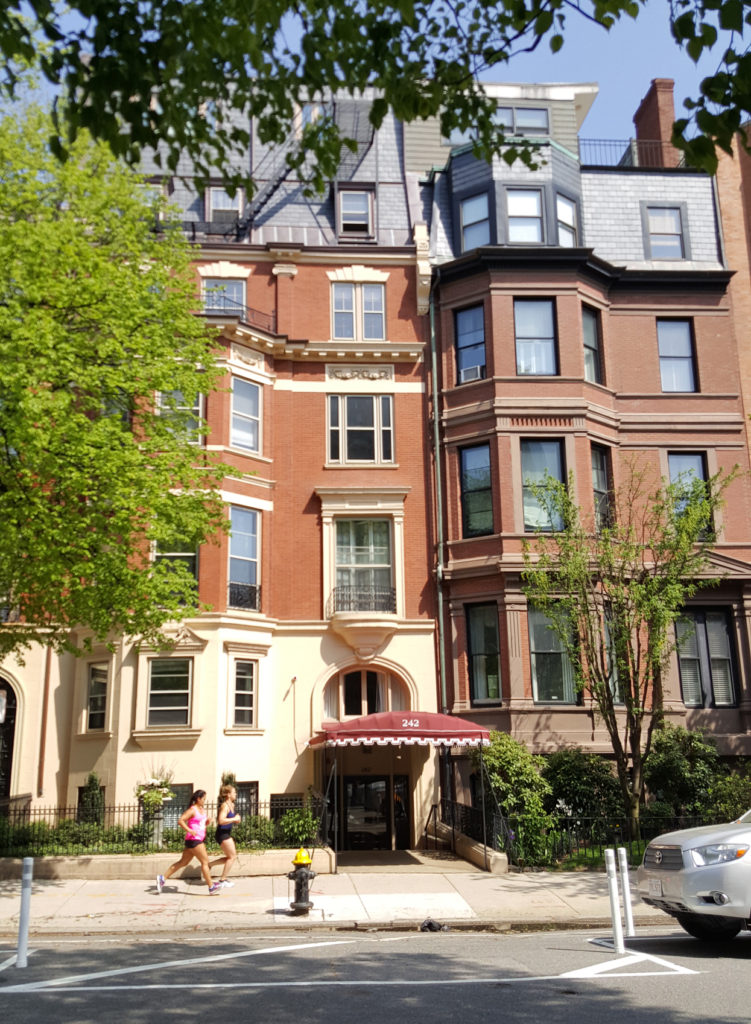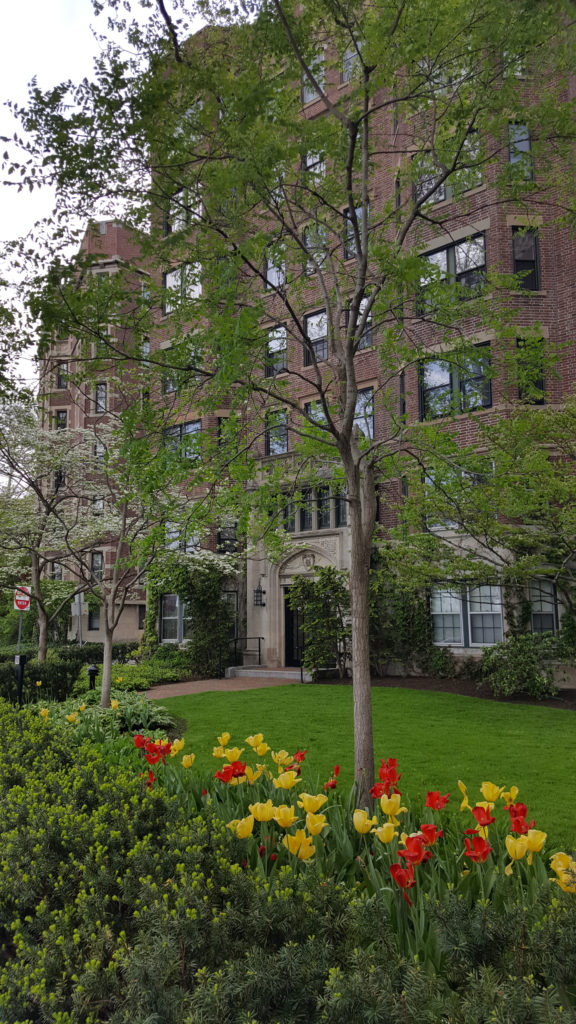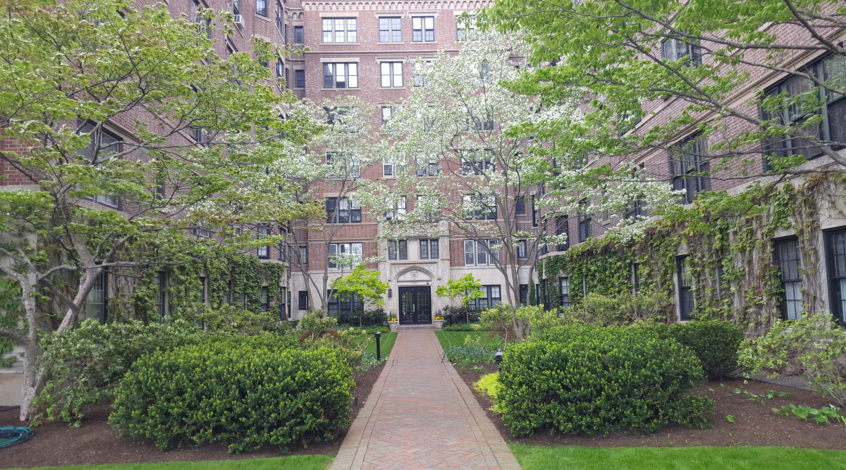The following article appeared in the February 2020 issue of Condo Media.
It could be argued that Boston played a more important role in the birth of America than any other city. It’s where Paul Revere rode, where the Boston Tea Party took place and where many signers of the Declaration of Independence lived. It’s the capital of the state where the first pilgrims landed in the New World, and where the second and sixth presidents were born. It’s the home of Bunker Hill, some of the world’s leading colleges and hospitals, and countless historic buildings.
So history is important here – and throughout New England. And the most tangible reminder of Boston’s history is its historic buildings. Buildings like the Old North Church, Faneuil Hall and the Old State House.
For these buildings, and others throughout Beacon Hill, Back Bay and other areas in and around Boston, ongoing preservation is essential. Not all are as crucial to American history as Paul Revere’s home, for example, but they all contribute to the character of one of America’s most beloved cities.
Historic buildings offer us a record of our past that we can touch. They are museums; reminders of our past that are more vivid than the deepest memories. They are a reflection of what life was like before the Internet and cellphones, before computers, before television, even before automobiles. They provide a glimpse of what life was like when our ancestors were creating our heritage.
We seek to preserve them not only because they are part of our history, but because of their beauty and charm.
Preservation vs. Practicality
But preservation doesn’t necessarily mean keeping a building identical to what it was like in the 1700s. Lead paint was used then. So was asbestos.
Buildings constructed centuries ago may be structurally unsound. Land in the Back Bay and Brookline was filled in and built on. Many buildings were constructed on wooden pilings that have had to bear the weight of a building for centuries.
Some of the materials used then may not even be available today. The quality of wood today, for example, is not as high as the quality of wood that was available hundreds of years ago. As such, it is often better to preserve rather than replace windows and other wooden features.
Conversely, many of today’s materials are designed to be stronger, more weather resistant and environmentally friendly.
When undertaking a historic restoration, it’s essential to preserve the character of the building. It’s important to retain anything pertinent to the building’s history, but some features may need to be replaced, not restored.
When seeking to preserve or restore a historic building, condominium boards and managers typically need to be practical, preserving what is historically important, replacing features that can be improved and staying within a budget. The following tips may also help.
1. Preventive maintenance is essential. Buildings are like bodies – they don’t age well if no one takes care of them. Pretty much every building needs to be worked on continuously, but this is especially true of older buildings.
Yet condominium trustees are understandably budget conscious and often overlook routine maintenance. When repairs are needed, they are often handled on an ad hoc basis. When a nor’easter drives moisture into an area where the masonry is deteriorating, for example, trustees may decide to repair only the area that leaked, even though the entire brick façade needs to be repointed.
While repointing a building may be expensive, consider the capital cost of restoring damage caused by the elements. Maintenance will save time and money, while helping to preserve the historic integrity of your building.
Maintenance-related projects typically can be approved quickly and easily. Smaller restoration projects do not require extensive hearings. A building permit will still be needed, but an administrative review will typically suffice, rather than a full hearing before a historical commission.
2. Visually inspect the exterior. It’s common for condominium associations to focus on cosmetic, interior repairs, such as replacing the carpeting. Buildings look better to residents and visitors when new carpeting is installed or hallways are repainted.
But outdated carpeting can be kept in place indefinitely without creating damage to the building envelope. When masonry is deteriorating, enabling water to enter the building, repairing the damage and repointing the brick should be a top priority.
You may not be able to see what’s happening to your roof without going up and looking, but if you have not inspected it in years, it’s likely that some wear and damage have taken place. Look up and see what you can see, then have a professional check it out and maintain it as needed.
Ideally the roof and façade of a building should be inspected annually. In Massachusetts, buildings that are more than 75 feet high are required to be inspected and certified every five years by a structural engineer.
3. Know the regulations. When historic buildings were being constructed, there were no zoning or building codes to deal with. Bringing an old building up to code can be expensive and difficult.
In addition to conforming to today’s building codes and regulations, there are federal, state and sometimes local standards for historic preservation projects. Consult the Secretary of the Interior’s Standards for the Treatment of Historic Properties for federal guidance. There are also local historical commissions to work with, such as the Boston Landmarks Commission, which has nine districts, the Cambridge Historical Commission and the Brookline Historical Commission.
Historical commissions take history seriously. They recognize that when a bit of history is destroyed, it can never be recreated. As such, their requirements for materials used and the integrity of the building may seem strict, but your local commission can also provide you with the help and guidance you need for a successful project.
Historical commissions typically meet monthly. If you have a project to present, know what to anticipate. Either gain an understanding of the regulatory process or retain someone who already has it.
If a building is listed on the National Register of Historic Places, it may qualify for a federal historic preservation tax credit, but you will also have to follow standards required for listed buildings. The Massachusetts Historical Commission provides grants for preservation projects, although mostly for nonprofits.
4. Focus on what matters. You may need to perform a restoration triage, focusing on what most needs to be addressed.
As a first step, identify the historic character of the building – that is, determine what makes the building special. It may be the architectural style, materials that were used or its place in history. These character-defining features must be maintained to prevent the integrity of the building from being compromised.
A site assessment will help you identify what’s important, while also helping to determine what areas of the building are in most in need of maintenance or restoration.
5. Define your project. Next, determine the appropriate scope of your project. The least amount of change possible to the building’s historic design is typically the preferable approach, but also consider what needs to be updated.
There is typically a desire to respect the original design and materials, while meeting applicable codes and tenant needs. Brick veneer is typically used today, for example, but a historic building constructed of brick should be restored with brick.
Over time, minor changes that seem inconsequential can add up and diminish the integrity of a historic building. A balance must be struck so that original features of the building are retained, while accommodating new technologies that can enhance building systems.
In addition, safety and security needs should be considered. Tenants and visitors must be protected from harm. Today’s buildings are designed to stand up to earthquakes, hurricanes and other acts of nature.
Accessibility is also an issue. Access must be provided for persons with disabilities, while meeting preservation goals. Wheelchair ramps may not be part of the original design, but they need to be added to today’s public buildings.
Make logical decisions for the good of the building above all else. The building is why every employee, every member of your board and everyone involved with your project needs to know what aspects of the building need to be preserved as meticulously as possible, and where something minor can be sacrificed to stay within your budget.
Prepare a concise, but complete, summary of the entire scope of work being planned. Include existing conditions, historic conditions if known and the proposed scope of work. An example from Boston’s Landmarks Commission: “Remove all of the non-historic aluminum windows on the front façade and install two-over-two, double-hung wood window sashes with true divided lights and wood brick molds all with a black painted finish to match the historic.”
The commission recommends preparing an itemized list of work items, adding, “This description is used to create the official notice and subsequent decision, and it must clearly represent the entire project.”
Supporting documentation should be prepared that clearly illustrates existing conditions, the scope of proposed work and its impact on the building. Documentation should include color photographs, fully dimensioned existing and proposed drawings, as well as written specifications.
Documentation should define what is being proposed in detail, how the work will be performed and how the work will affect the appearance of the building. Depending on the scope of the project, it may be beneficial to hire an architect.
6. Retain an experienced project manager. Historic buildings are too important for anyone to be learning on the job. While you’ll want the work to be done for a reasonable price, you don’t want anyone doing the work who might possibly compromise the integrity of your historic building.
Bring in someone who has expertise and experience with historic restoration, and who knows the approval process and regulatory requirements. If you’re uncertain how to identify the restoration professionals you need, seek guidance from your management company or local building department, or retain a building envelope consultant.
If all goes well, your building will look brand new when work is completed, while also looking like it did hundreds of years ago. The building will be strengthened and so will its history.
Kieran Fitzgibbon is co-owner of Statewide RM of Brighton, Mass., which specializes in masonry restoration for condominiums. He can be reached at [email protected].

